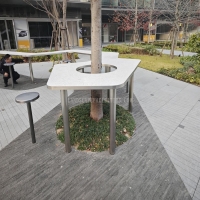Welcome to the website for landscape facilities products and knowledge.
How does the bin’s design prevent rainwater from accumulating inside the waste compartment?
Modern bin designs incorporate several clever features to prevent rainwater from accumulating inside the waste compartment, ensuring hygiene and functionality. One key element is the sloped or convex lid, which directs rainwater away from the opening and prevents it from seeping inside. Many bins also feature small drainage holes at the bottom of the compartment, allowing any incidental water to escape easily.
High-quality outdoor bins often use materials like rust-proof stainless steel or UV-resistant plastic, which are not only durable but also designed with water runoff in mind. Some advanced models include internal channels or grooves that guide water toward the drainage points, minimizing pooling. Additionally, elevated bases or feet keep the bin slightly above ground level, preventing water from entering through the bottom.
For bins with swing lids, tight-sealing mechanisms ensure rainwater doesn’t penetrate when the lid is closed. In larger communal bins, ventilation systems may also help evaporate moisture, further reducing the risk of water buildup. These thoughtful design elements combine to create a dry, odor-free waste storage solution, even in heavy rainfall.
By prioritizing drainage and material innovation, manufacturers ensure that bins remain practical and sanitary, regardless of weather conditions. Whether for residential or public use, these features make modern bins a reliable choice for waste management.
Related search:

Recommendation
An outdoor bar counter with stainless steel and terrazzo materials in an irregular shape